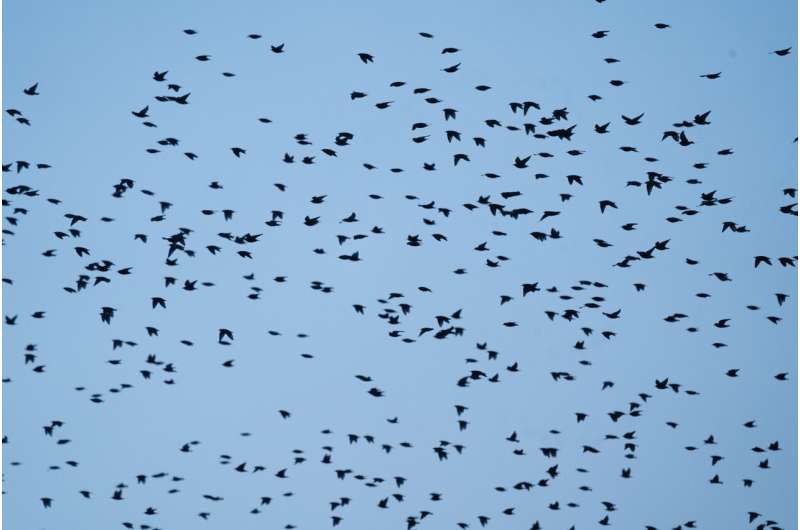Thinking collectively to understand the social intelligence of animals

What if, in order to understand the social intelligence of animals, including humans, we had to study the brain at the group level and not only at rather than the individual level? This is a perspective put forward by Julia Sliwa, a CNRS researcher at the Paris Brain Institute, in the journal Science.
All animals evolving in social groups, from ants to humans, birds and monkeys, adapt their behavior to the group. The group represents a considerable evolutionary advantage for many species. It allows them to find solutions or accomplish tasks that are impossible to achieve alone: from reducing predation to building habitats, from ant hills to human cities. These behaviors arise from social interaction, be it verbal or non-verbal communication, mimicry, memorisation, or other signaling processes.
From ethology to social neuroscience
Research in ethology has already revealed collective decision-making within social groups of animals. These decisions are made by individuals without them realizing that it is a collective effort, but simply by having one-to-one interactions that gradually guide the whole group in the same direction. This is for example the case with some birds such as starlings when they fly. By computer modeling interactions, it is even possible to simulate what type of collective behavior would emerge from these interactions, by varying the skills of the individuals in the group, such as memory and the ability to signal information to others.
But what happens in the brains of these individuals when they interact and make individual decisions within groups? Until now, neuroscience has mainly studied animal intelligence at the level of an individual brain in isolation. However, it is quite possible that the brain of this animal changes its functioning when it evolves within a group. Technological advances in brain imaging now make it possible to make electroencephalographic recordings, i.e. of the brain's electrical activity, using portable machines. The study of social cognition has thus been able to move out of the laboratory and into "real life." We now know that in humans, within a group, the electrical activity of the brains of the individuals that make up the group can be synchronized during various social interactions, from communication to learning.
Towards a collective approach of social intelligence
Two recent publications in the journal Science focus not only on how animals perceive the social interactions of others but also on how they experience them, i.e., how they interact with others. The other major novelty of their approach is that they look not only at two-to-two interactions but also at all interactions within the group, potentially a very large number of interactions at the same time. The synchronization phenomenon already observed in humans also exists in other primates and bats, suggesting a mechanism that is conserved at least in mammals. Moreover, while humans and several primates are individually able to represent group decisions, many other animals, especially insects, are not. How this ability is encoded in the brain is a new field of research that these publications started to uncover.
Finally, could the key to social intelligence lie in the synchronization of the brains, allowing group interactions to be made? If so, should social neuroscience now focus on the group rather than the individual? Above all, this work suggests the importance of studying social intelligence at both scales. Another perspective would be to extend group interaction from the real to the virtual, to explore the new collective dynamics resulting from the use of social networks on the internet.
More information: Julia Sliwa, Towards collective animal neuroscience, Science (2021). DOI: 10.1126/science.abm3060. www.science.org/doi/10.1126/science.abm3060
Journal information: Science
Provided by Institut du Cerveau (Paris Brain Institute)





















